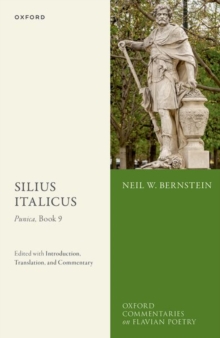
Silius Italicus: Punica, Book 13 : Edited with Introduction, Translation, and Commentary PDF
by C. M. van der Keur
Part of the Oxford Commentaries on Flavian Poetry series
Description
Book 13 of Silius Italicus' Punica marks an important turning point in this Latin epic poem on the Second Punic War. After twelve books of Carthaginian dominance, Rome begins to gain the upper hand.
Following his failed attempt to attack Rome, Hannibal is devastated to learn that his role model Diomedes had provided Aeneas' heirs with the protective talisman of the Palladium, and leaves for southern Italy.
This allows the Romans to finish their siege ofCapua, Hannibal's rich ally in Italy, in punishment for its treachery; Capua's fall marks the beginning of the end for Carthage.
The book's central theme of the anticipation of Rome's destined victory is continued in the third and longest part of the book, where young Scipio, the future Africanus, ventures intothe underworld, and into the depths of the rich poetic past, to be inspired by the shades he encounters and to define his own position as an epic hero. This volume presents the first full-scale literary and linguistic analysis of the entirety of Punica 13, including the famous Nekyia episode.
The notes, which cover matters of syntax, textual criticism, style, a selection of realia, and important verbal and conceptual parallels, are complemented with extended introductory paragraphs for each scene focusing on poetic models, themes, intertextual interpretation, and narrative structure.
C. M. van der Keur's GeneralIntroduction discusses the book against its Flavian background, its position within the epic and within the literary tradition, and Silius' use of metre and verse composition.
The Latin text is presented alongside an English translation.
Information
-
Download - Immediately Available
- Format:PDF
- Publisher:OUP Oxford
- Publication Date:28/03/2024
- Category:
- ISBN:9780192884893
Information
-
Download - Immediately Available
- Format:PDF
- Publisher:OUP Oxford
- Publication Date:28/03/2024
- Category:
- ISBN:9780192884893










